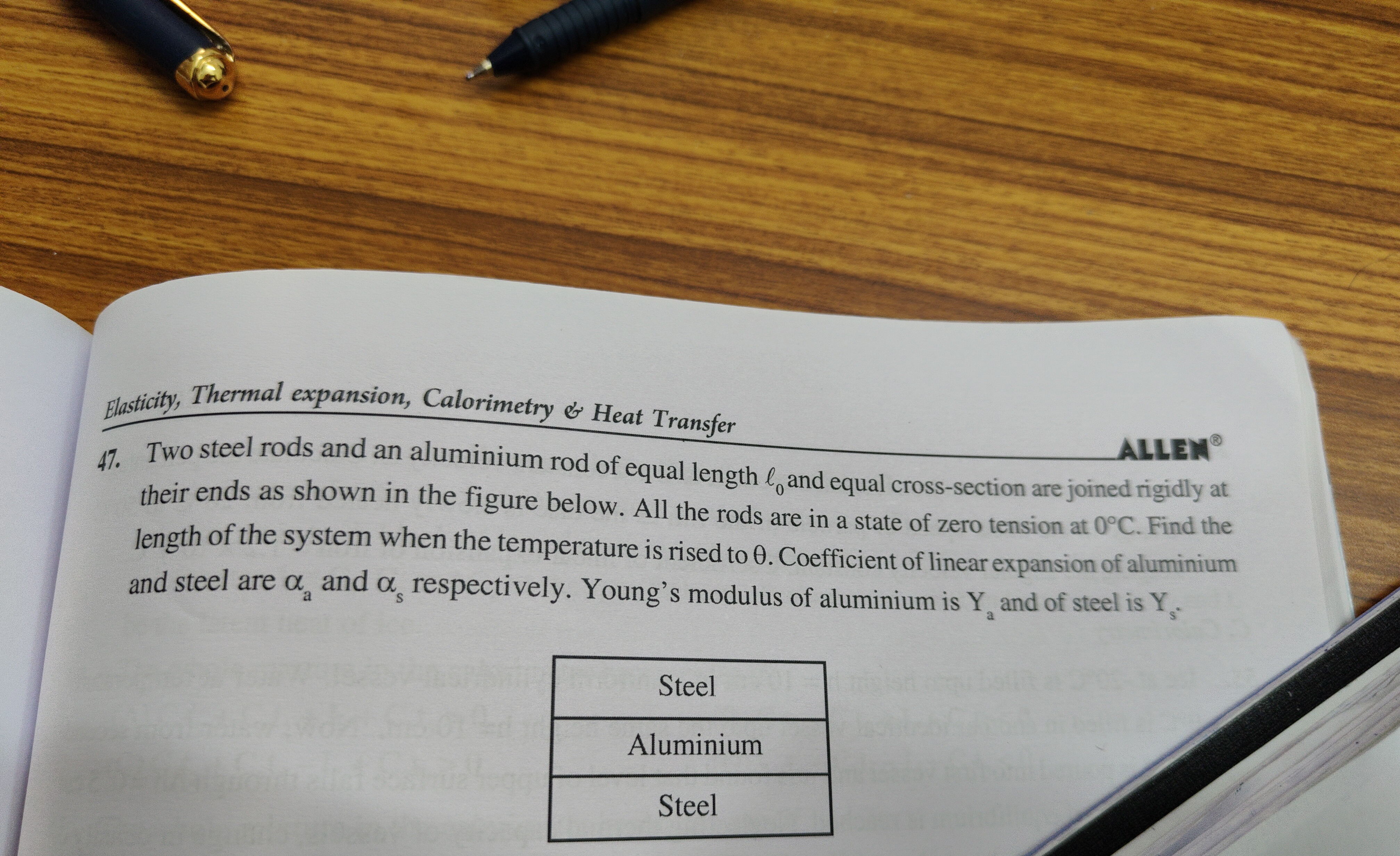Question
Question: Two steel rods and an aluminium rod of equal length $l_0$ and equal cross-section are joined rigidly...
Two steel rods and an aluminium rod of equal length l0 and equal cross-section are joined rigidly at their ends as shown in the figure below. All the rods are in a state of zero tension at 0°C. Find the length of the system when the temperature is rised to θ. Coefficient of linear expansion of aluminium and steel are αa and αs respectively. Young's modulus of aluminium is Ya and of steel is Ys.

The final length of the system is L=l0(1+θ(Ya+2Ys2αsYs+Yaαa)).
Solution
When the temperature rises, each rod attempts to expand. Due to rigid joining, they must reach a common final length L. The total strain in each rod is the sum of thermal strain and strain due to internal stress. For steel rods, the strain is l0L−l0=αsθ+Ysσs, and for the aluminium rod, it's l0L−l0=αaθ+Yaσa. Since the final lengths are equal, the total strains are equal: αsθ+Ysσs=αaθ+Yaσa. Considering force equilibrium, with two steel rods and one aluminium rod, the total force from steel must balance the force from aluminium. Assuming αa>αs, aluminium is in compression (σa<0) and steel is in tension (σs>0). The equilibrium condition is 2∣σs∣A=∣σa∣A, which simplifies to 2σs=−σa. Substituting this into the strain equality and solving for σs gives σs=Ya+2YsYsYa(αa−αs)θ. The change in length L−l0 is then calculated using the strain equation for steel: L−l0=l0(αsθ+Ysσs). Substituting the expression for σs and simplifying leads to the final length L=l0+(L−l0)=l0(1+θ(Ya+2Ys2αsYs+Yaαa)).
